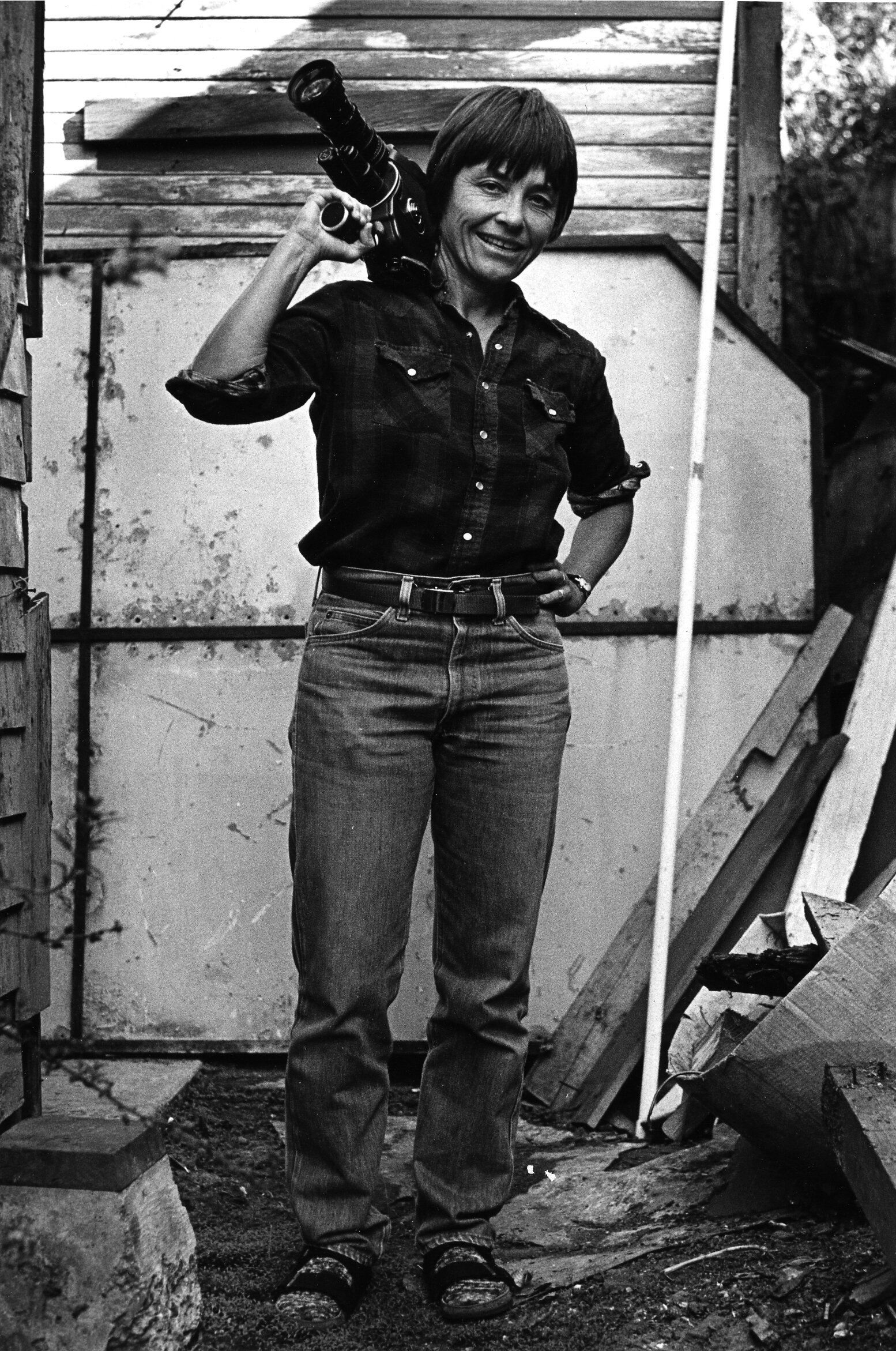Electronic Arts Intermix (EAI) is one of the world’s leading resources for video and media art. Founded in 1971 by gallerist Howard Wise, EAI was envisioned as an alternative paradigm for the cultivation of artists’ media, serving as a critical hub for the creation and distribution of video at a time in which the availability of these tools was limited and the infrastructure for the circulation of these works was still emerging. Access, community, and experimentation were the cornerstones of EAI’s founding, and continue to charge the work we do.
In 2021, EAI celebrated its 50th anniversary with a rotating series of video features and oral histories from key figures across our collection—in many cases accompanied by newly commissioned writing, archival documents, and interviews. Fifty.eai.org emerged as a hub for these special projects reflecting on the milestone and envisioning the organization’s future. Now, this microsite offers a platform for continued writing, conversations, and video features beyond the occasion of the anniversary, celebrating our artists and the rich, ongoing history of EAI.
Howard Wise and Operations Engineer John Trayna at the EAI Video Editing Facility, 1972. Photo: Davidson Gigliotti. Image description: Two men look through a window into an editing station featuring monitors, open-reel tape machines, and other equipment.
Broadcasting: EAI at ICA, installation view, 2018, Institute of Contemporary Art, University of Pennsylvania (ICA). Photo: Constance Mensh. Image description: Two exhibition-goers watch a video work by Shana Moulton.
10th Annual Avant Garde Festival, Charlotte Moorman plays Nam June Paik's Concerto for TV Cello and Videotapes, 1973. Photo: Ivan Spane. Image description: Charlotte Moorman performs Paik’s sculpture, comprised of three stacked television monitors and a string, arranged in the shape of a cello.
Prior to the foundation of Electronic Arts Intermix, the Howard Wise Gallery (1960-1970) exhibited works at the nexus of art and technology with a particular emphasis on multimedia and kinetic art. The pathbreaking 1969 exhibition TV as a Creative Medium cemented Wise’s interest in the possibilities of television. The first exhibition in the United States dedicated to video, the show featured an array of approaches to TV, including performance, objects, closed-circuit tapes and installations. It was a major catalyst for the emerging heterogeneous video culture, and ultimately inspired Wise to close his gallery and open a non-profit to “explore the potentials of the electronic media as a means of expression and non-commercial communication.”
EAI's founding mission was to develop and support the emergent video medium by providing artists with access to funding, technology, and other resources. At its inception, EAI served as the sponsor for projects that included The Kitchen, the Annual Avant Garde Festivals, the first Women's Video Festival, the Open Circuits conference at MoMA, Computer Art Festivals, and the patenting and distribution of Eric Siegel's Video Synthesizers, among others. The sponsored projects were independently directed; several became autonomous once they had established stable sources of funding. The Artists' Videotape Distribution Service and the Editing/Post-Production Facility—projects initiated within EAI—were thriving by the end of the decade, and became the organization's core programs.
For more information about the early days of EAI, see A Kinetic History, a digital resource guide that charts the early history of the organization, replete with primary documents and contextualizing essays.
Today, the core program of EAI is the distribution and preservation of a major collection of nearly 4,000 new and historical video works by artists, made available for screenings, exhibitions and acquisitions to museums, collectors, and institutions, as well as through our Educational Streaming Service (ESS), providing access for educational and library users across the world. This collection represents an intergenerational cohort of artists from the ‘60s to present.
Sondra Perry, Graft and Ash for a Three Monitor Workstation, 2016. Image description: The artist’s computer-generated face appears in front of an orange, gelatinous surface.
Barbara Hammer, California, 1979. Photo: Maria Brännström. Image description: Barbara Hammer stands with one hand on her hip and a camera in the other.
Charles Atlas, Hail the New Puritan, 1986. Image description: Dancer Michael Clark stands in front of a pink and red polka-dotted wall.
Ed Emshwiller, Sunstone, 1979. Image description: A menacing purple orb with a human face in the center of a kaleidoscopic image.








